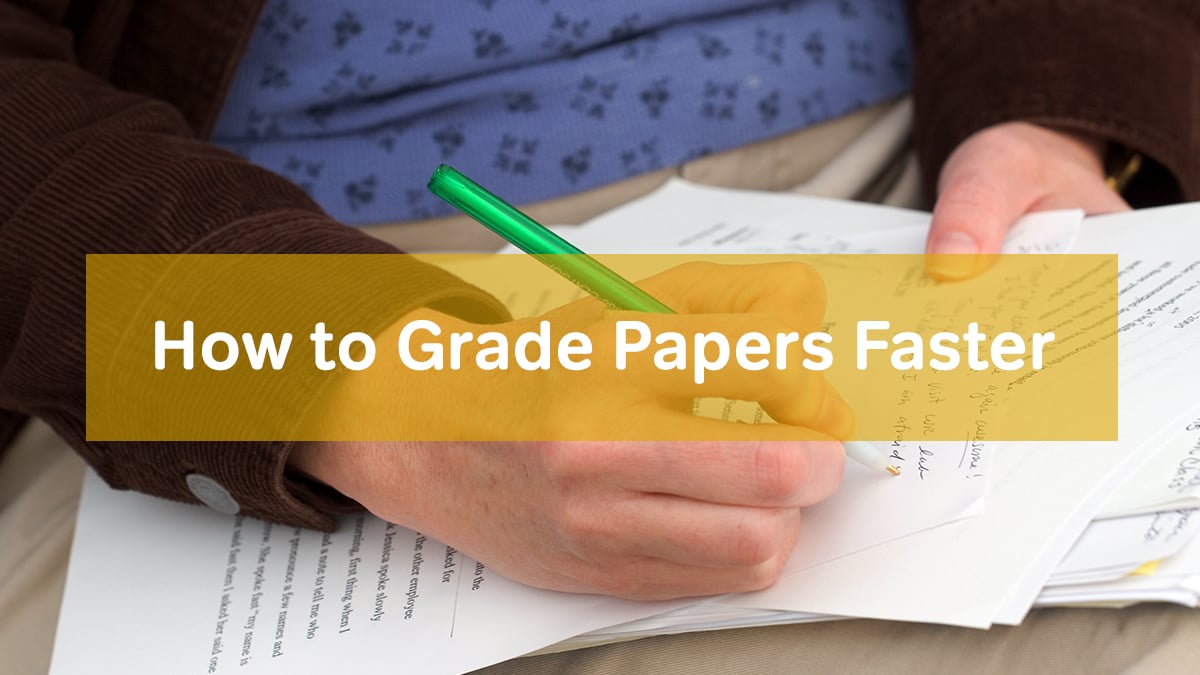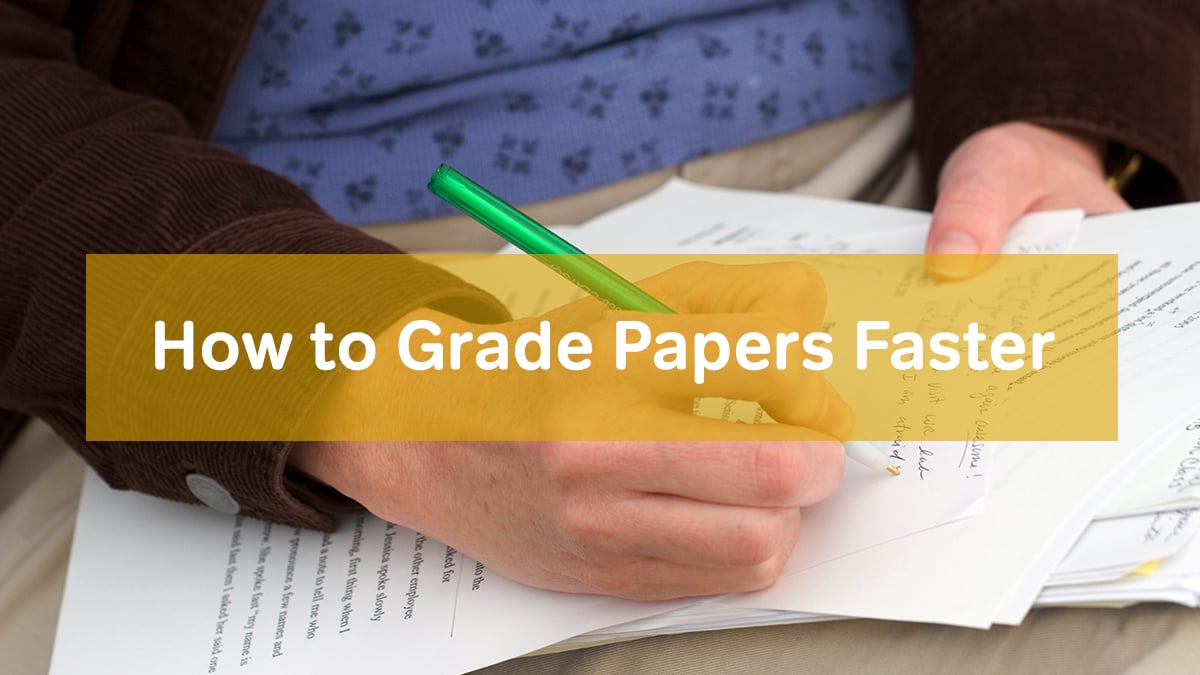
There are many different techniques that a teacher can use to assess their students' understanding of the concepts being taught. But using those techniques means grading! You will have to grade everything from papers to oral projects. Reviewing and grading dozens of student projects takes time! But there are ways you can save time, while still giving your students quality feedback. Today, I’m going to share a few tools with you that have helped me grade papers more efficiently over the years.

Find a Good Rubric for Fast Paper Grading
You probably already know it’s a good idea to grade papers based on a rubric. Rubrics lay out a set of standards that students and teachers alike can understand. What you may not know is that some rubrics are time-savers, while other rubrics can make grading take a lot longer.
Now obviously, you don’t want a rubric to be so simple that it doesn’t give students sufficient feedback on how they did. But a rubric doesn’t need to be so complex that grading takes more time than necessary. Let’s look at a rubric that is probably too complex for efficient grading.
Less Than Ideal Rubric
All those descriptions can distract your focus from the students’ actual work. It’s better to use a more simple rubric. This will help you maintain focus on your students’ writing so that you can mark them attentively and quickly.
More Ideal Rubric
This is a pretty straightforward rubric, and very helpful for efficient grading.
Of course, a more complex rubric can be helpful to students because it gives them a detailed explanation of why they got a certain score. So you may want to give your students a rubric with lengthy explanations, while using a more simple one for quick grading. And speaking of modifying rubrics….
Find a Way to Make the Points on a Paper Divisible by 10
Most rubrics are designed with assessments in mind, not ease of grading calculations. But this is an important consideration. You can use a rubric that grades on—say a thirteen point scale, or has seven differently weighted categories with a total of 155 points. However, these oddities will only make calculating your students’ letter grades take longer than necessary.
Keep it Simple
The letter grades you give your students are based on increments of 10 points. A is 90-100%, B is 80-89%, and so on. Why shouldn’t rubrics be the same? Look for a rubric that grades papers on a scale of 1-10, or carries a total of 100 points. If you can’t find one (and good base-10 rubrics can be hard to find), make one.
You can do this by modifying an existing rubric to a different point scale. Or you could make a new rubric from scratch. You still have a lot of flexibility if you do this! You can have as many categories as you want, and give each category any amount of weight you want. As long as the total points are easily divisible by 10 and easily translatable into a 100% scale grade, this should make grading easier.
Making this change not only helps you grade more quickly, but also helps you avoid miscalculating your students’ grades—a confusing and embarrassing mistake when it happens.
Set a Maximum Length for Your Students’ Papers
Traditionally, a lot of teachers have given their students a minimum length for writing assignments: at least 300 words, at least five pages, that sort of thing. But this really is counter-intuitive. What truly matters in a school essay is writing quality standards, as seen on the rubric. If a student can meet these standards with a relatively short paper, why not let them? Especially because telling students they need to exceed a minimum word or page count encourages “padding”—overly wordy sentences and unnecessary information that makes for lower-quality writing.
By setting a maximum length, you encourage students to think about elegant simple ways to express themselves. And you set the stage for writing they might do in their future careers after school. In the work world, reports, emails, and other professional pieces of writing need to be just long enough to accomplish their purpose. But they must still be short enough to be read with ease. And as an important fringe benefit, setting a maximum length also puts a limit on how much time you’ll need to spend giving each student paper the attention it needs as you grade.
The Takeaway
When assigning and subsequently grading papers, you want to work smarter, not harder. Setting clear expectations for your students, both in the classroom and for each assignment, will go a long way in guiding them toward success. A rubric accomplishes the setting of clear expectations for assignments, so use it!
And when the rubric also allows you to grade student papers effectively and quickly, everybody wins. Students get their grades back more quickly, and don’t have to anxiously wait. And you are able to devote more time and energy to other teaching activities. You will grade papers more reliably and consistently with a good grading system that doesn’t wear you out.




